We're long-time fans of the Roland LX series (LX for luxury), and we're excited to audition the newest members of the family, the LX-5, LX-6, and the top-of-the-line LX-9. They rolled into the warehouse just a day ago, and our video team hopped to the task of building each piano so we could get our eyes, ears, and hands on these beauties. Here are initial impressions.
Refining the luxury appearance
Each of these pianos, physically, is a little different from each other. While they all share the same "premium upright" shape, it's the size and height of each model that separates them visually. The LX-9 is still the tallest premium upright across all of the models we carry at kraftmusic.com. It just looks beefy and beautiful, especially when the top lid is open. As Adam said as he entered the studio, "it's just so nice when they're tall like this … it just adds so much visually." He's right – the 48 inch height fills a wall and gives you the impression that you're sitting down to play something special … which you are. The LX-6 (at 44 inches) is slightly shorter than the 9, and the LX-5 (at just shy of 41 inches) is slightly shorter than the 6. All of them have a more commanding appearance than the typical upright digital.
Roland has also continued their recent use of silver accents (as opposed to gold or brass), such as the finish of the pedals. We like both, but it seems that silver is the latest choice by Roland designers.
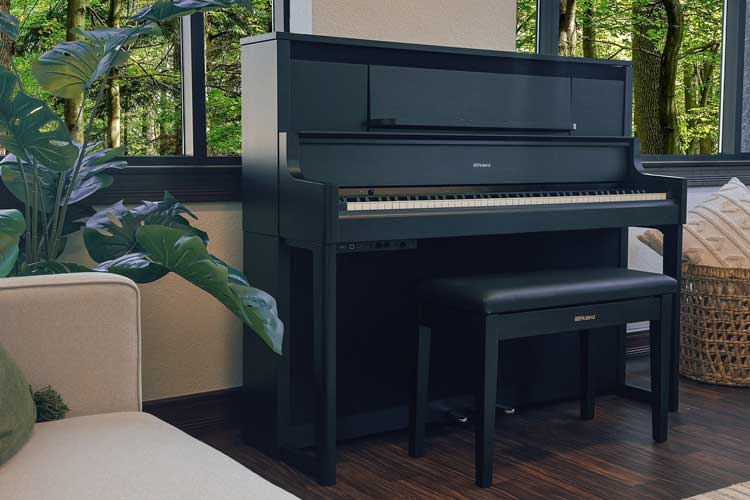
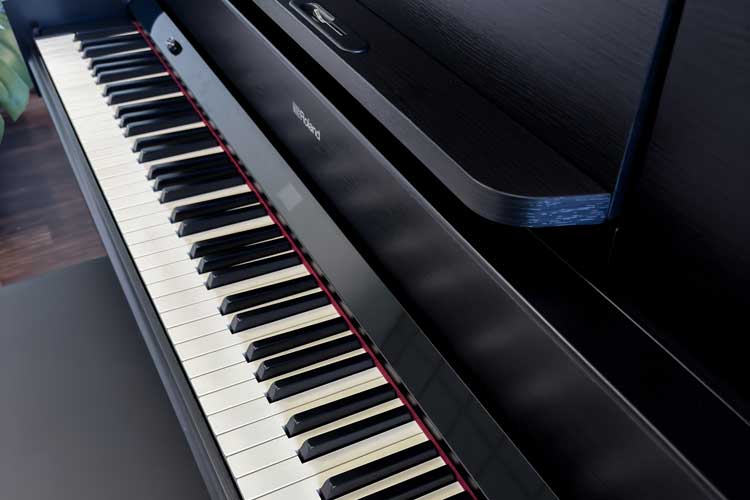
Speaking of aesthetics and colors, there are a variety of colors and finishes available for the LX models. The LX-9 is available in charcoal black, polished ebony or polished white (and the LX-9 is the only one available in white). The LX-6 is available in charcoal black, polished ebony, and dark rosewood, and the LX-5 is available in charcoal black, polished ebony, dark rosewood, and an additional unique color, light oak. Each model ships with a matching bench.
Slide open the key cover of each model (the LX-9 features a soft close cover that you lift, whereas the LX-6 and LX-5 have a key cover that you slide). Once open, you're greeted with the piano automatically powering on for you. It's a super nice touch (though not necessarily new with this series) and makes this digital seem even closer to an acoustic piano, which obviously has no power button. What is new is the appearance of the panel. Each of the new LX's have the same "Smart Touch blackout panel" that we first saw last year with the release of the latest Roland digital grands, the GP6 and GP9. This panel really is the best of both worlds … you have all of the physical "buttons" to touch to change sounds and settings, but a quick double tap of the power button turns those lights off for a streamlined appearance. A dedicated turning knob on the left side of the panel gives you easy access to the volume setting.
The story of Piano Reality
The real story of what makes these pianos different from their predecessors is Roland's Piano Reality technology. Essentially, Roland is using modeling technology (as opposed to sampling technology) to create the piano tones. With modeling, Roland has been able to do some interesting things. First, the piano sound is really superb and contains none of the "looping" that you might otherwise hear when working with a sample based tone. We'll try to demonstrate that on a future video. Also, polyphony is unlimited when playing the piano … just like an acoustic piano.
Finally, while the actions of each piano are similar to those of their predecessors, the response has been improved when mated to the new modeled tone. In fact, Roland says that the High Precision Sensing technology that is included allows for "ultra-detailed touch response." We agree. We dialed up the volume to 100 on the LX-9 and tried playing as dynamically as we could, from pianissimo to fortissimo, and the range of volume, combined with brightness that occurred during heavy playing, was pretty remarkable.

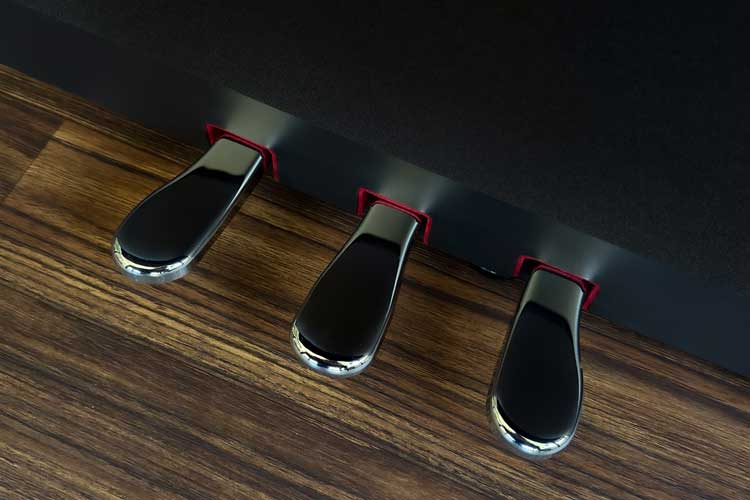
Comparing the keyboard actions
Speaking of actions, while the physical actions are a bit different, it's important to know that the High Precision Sensing technology is standard on each model. The LX-9 is the flagship, obviously, and it has the PHA-100 Hybrid Grand Keyboard action with the hybrid wood/molded keys with Ivory feel, along with escapement, long key pivot length, and haptic vibration. This is the most satisfying key action in any of Roland's offerings.
The LX-6 also has the PHA-100 hybrid wood/molded key action with escapement, along with the long pivot length, but lacks the haptic vibration. Not much difference here.
The LX-5, as the least costly in the series, features Roland's tried and true PHA-50 hybrid keyboard with hammer action, and it's a fine piano to play as well. Again, they all get that High Precision Sensing key technology, so for those of you who have played a Roland keyboard with the PHA-50 before, this is a different experience.
The sound
We already covered the idea that each of the LX models have the same Piano Reality technology along with the same piano tones, extra voices, and awesome front panel design. But each model "sounds" a bit different, and it stems from the size and cost of each model.
The LX-9, the tallest upright in the room, benefits from that size in that Roland is able to house a 4-way 8 speaker system with a dedicated center channel in the cabinet. This truly is one of the loudest (and that's a good thing!) digital pianos we have heard. The opening lid at the top allows for even more sound to find its way to your ears. The speaker system also projects wonderfully when playing non-piano tones thru it, like strings and organs, or even drum rhythms.
The LX-6 features 5 speakers that are housed in the cabinet, but lacks the 9's opening lid. And the LX-5 is a bit simpler in the sound department with a 4 speaker system.
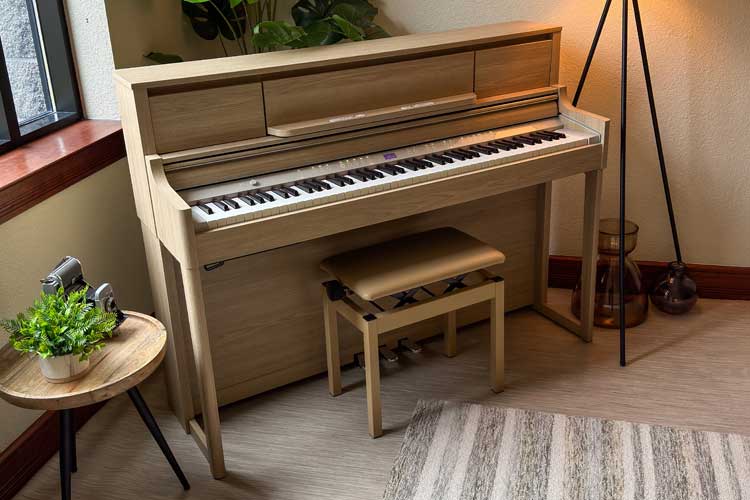
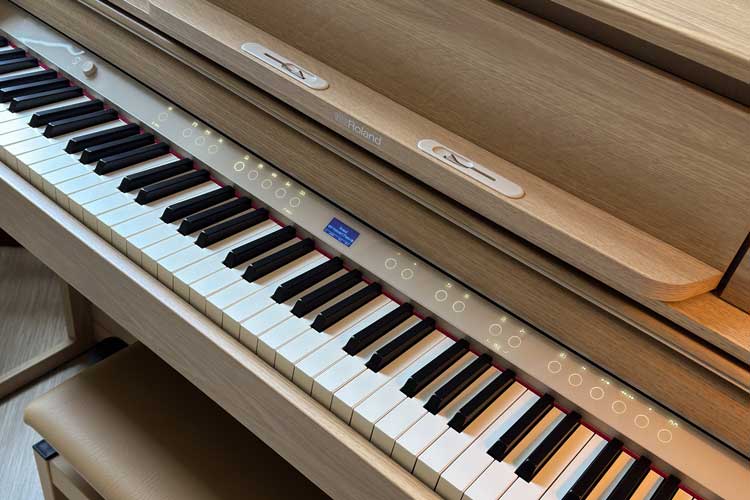
All models have dual headphone jacks, and the experience of playing with headphones is quite remarkable. There is a handy touch button on the left side of the panel that allows you to place your piano sound in a different environment, which simulates what it might sound like to play in a concert hall or studio. This is what Roland calls Piano Reality Headphones Ambience. Roland and others have been doing something similar for years, but they have refined this to yet another level.
Finally, all of the LXs offer a way for you to tweak your piano's sound using some onboard piano technician tools … things like brilliance, string tuning, string resonance, and much more are available to you so that you can edit the tone and make the piano sound the way you like it. As with all digital pianos, we really recommend that you spend some time with this feature as you can make these pianos sound vastly differently than they do when first coming out of the box. Like a brighter tone? Add some brilliance. A richer tone? Add some resonance. I always reach for those two parameters and add some reverb or select a concert hall-type environment. It's just the way I like it, and Roland gives you the tools to get there.
Other features worth mentioning
Of course there's a metronome, and a song recorder. And of course there are loads of sounds (more than 300), Bluetooth, USB, the ability to split and layer. And of course you can connect, via Bluetooth, to an iPad or tablet and use the free Roland Piano App to do all sorts of things from the most basic features (adjust volume) to access digital sheet music and more. As a side note, as remarkable of a feature that this is, It's hard to believe that this isn't the feature that we would highlight! It's just that a premium piano these days has to have an app, and has to connect to an iPad, and Roland does a fine job in that department with the Roland Piano App.
In closing, we're sold! We always wonder, "what will they do next?" The new LX pianos retain their luxury appearance and Roland has delivered in evolving the digital piano sound experience to another level.

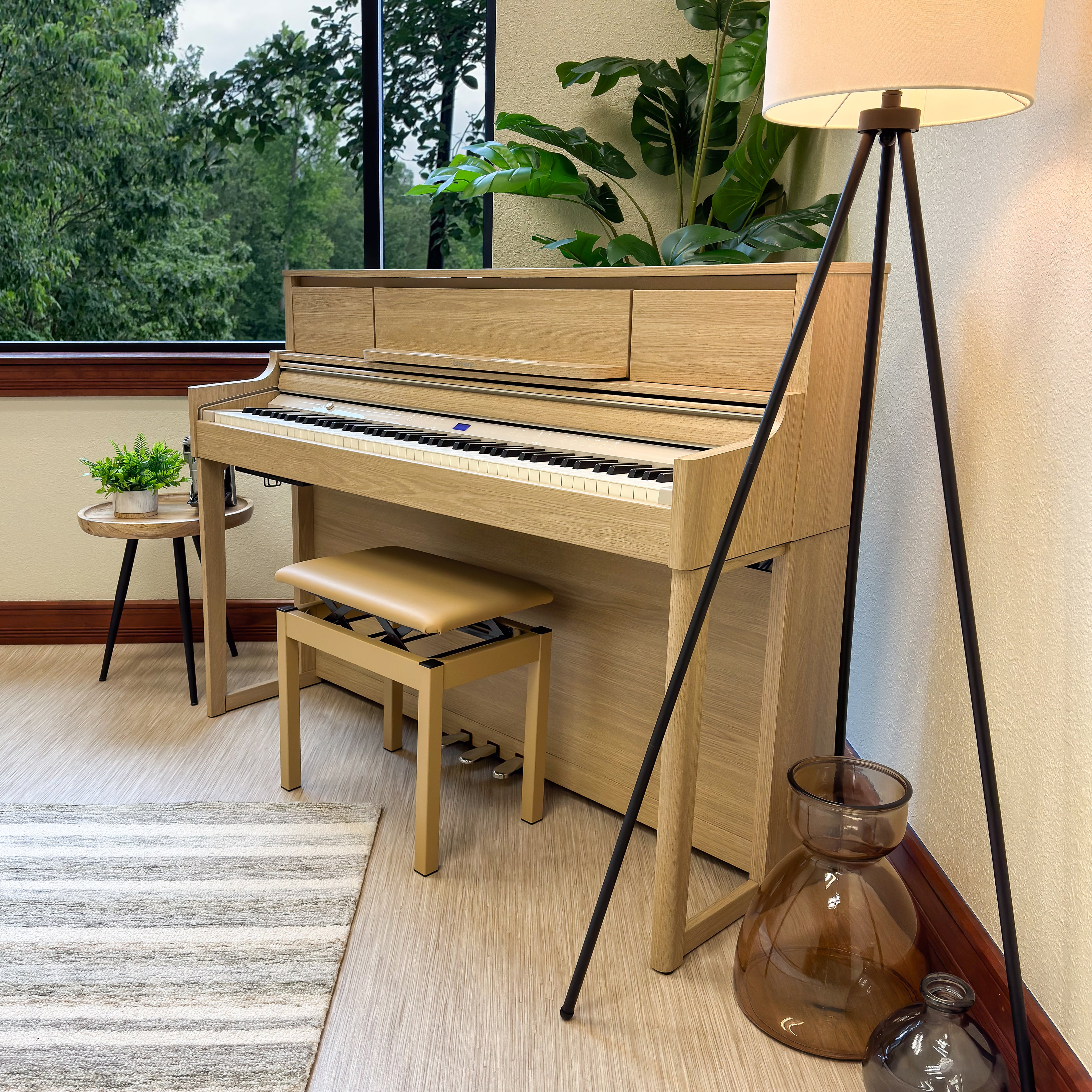
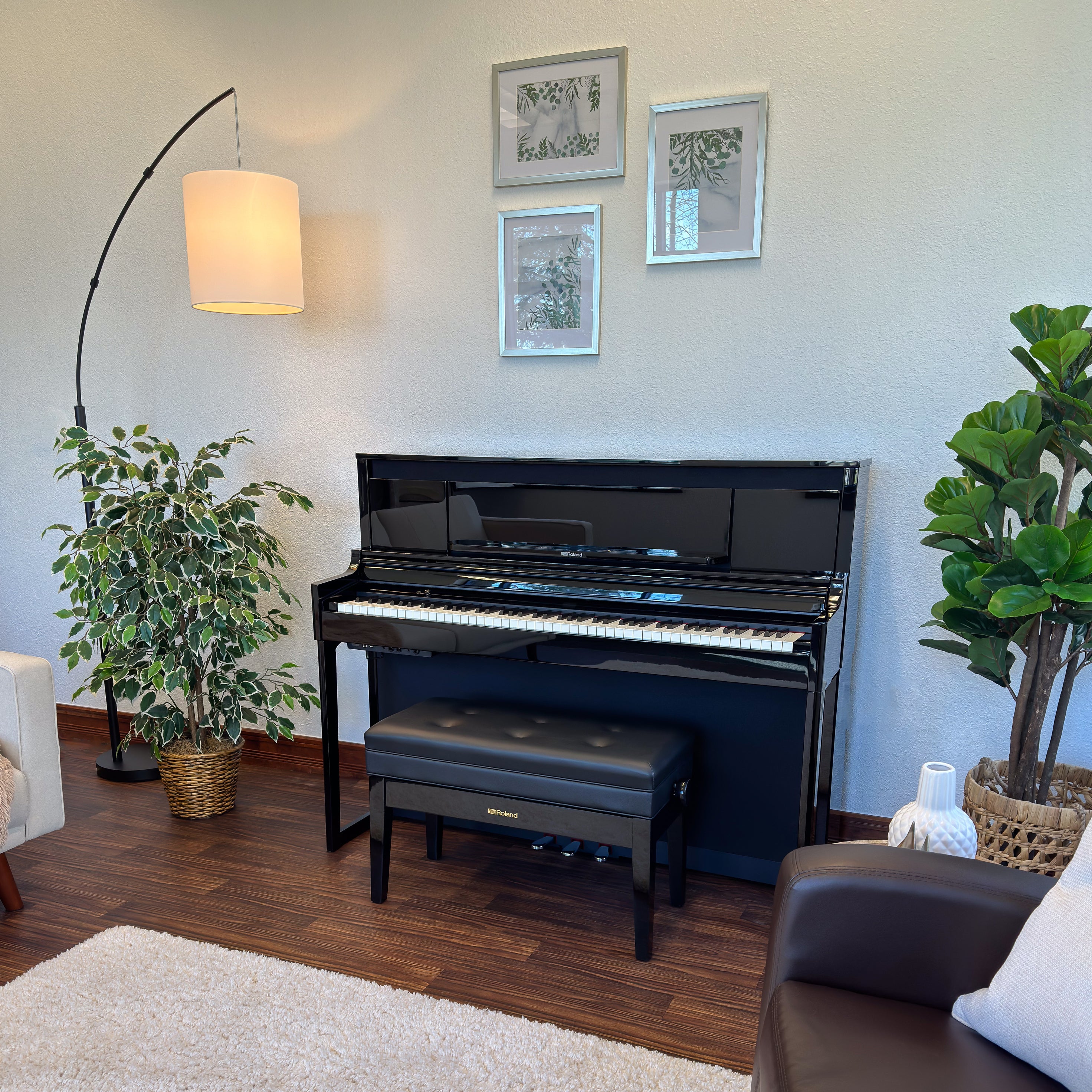
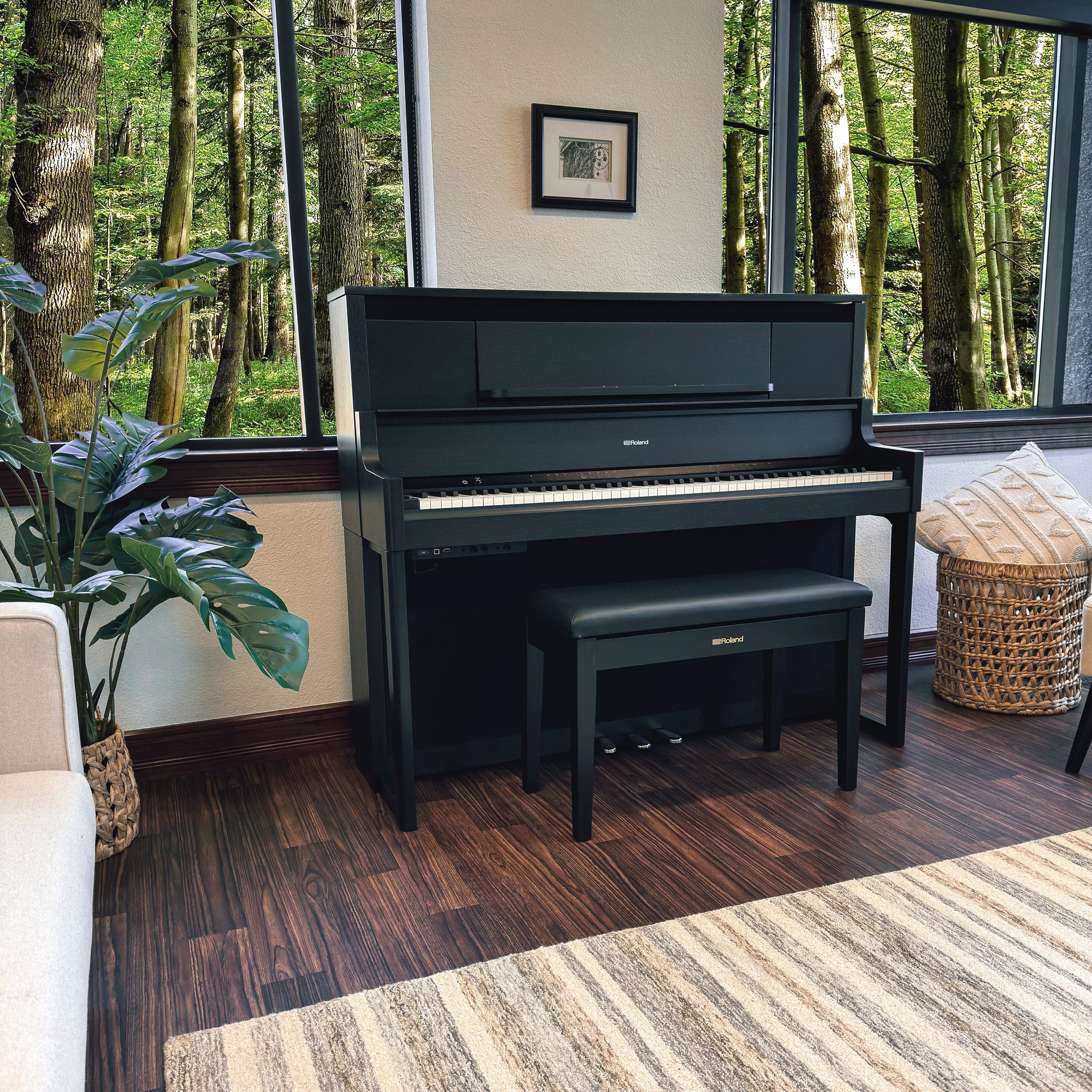
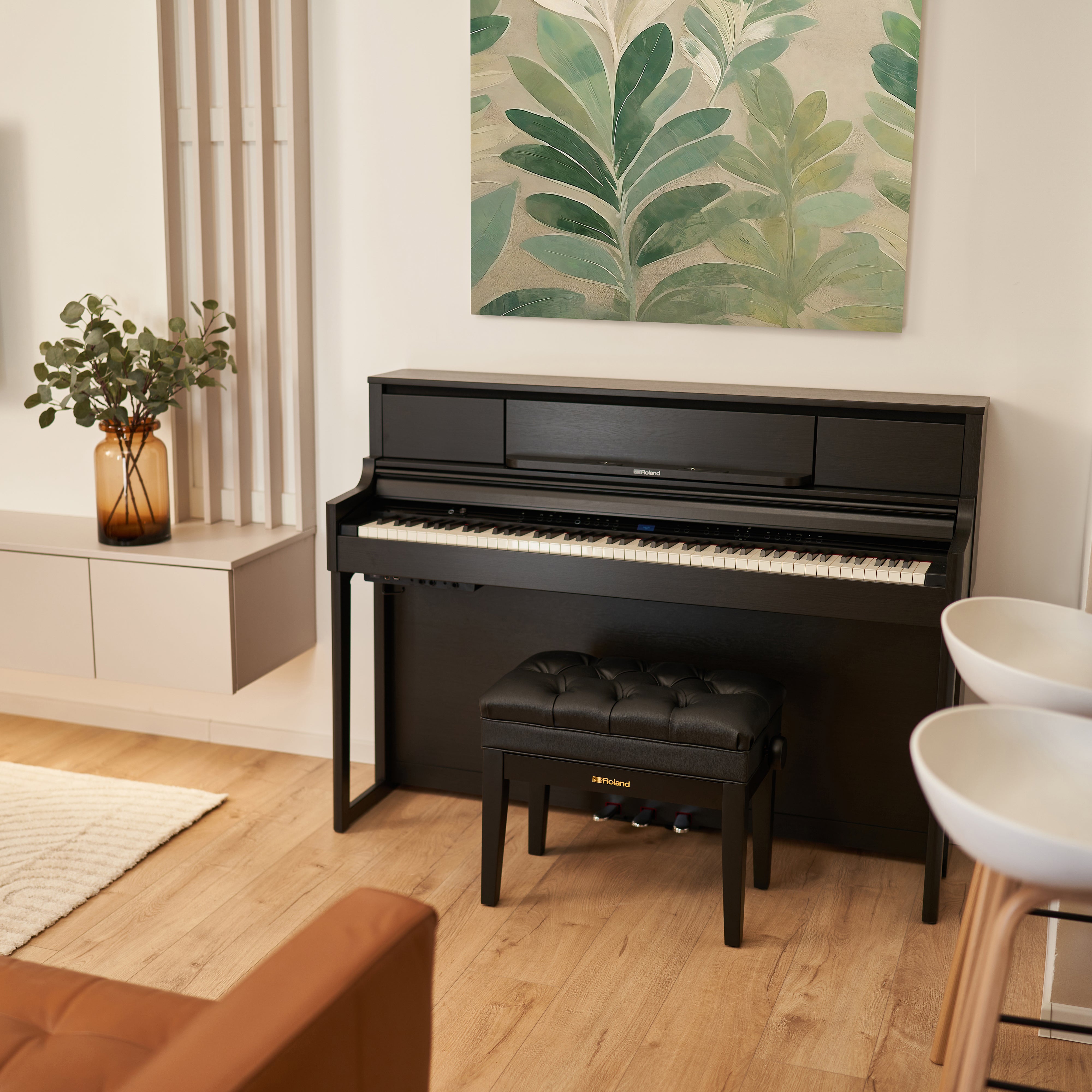
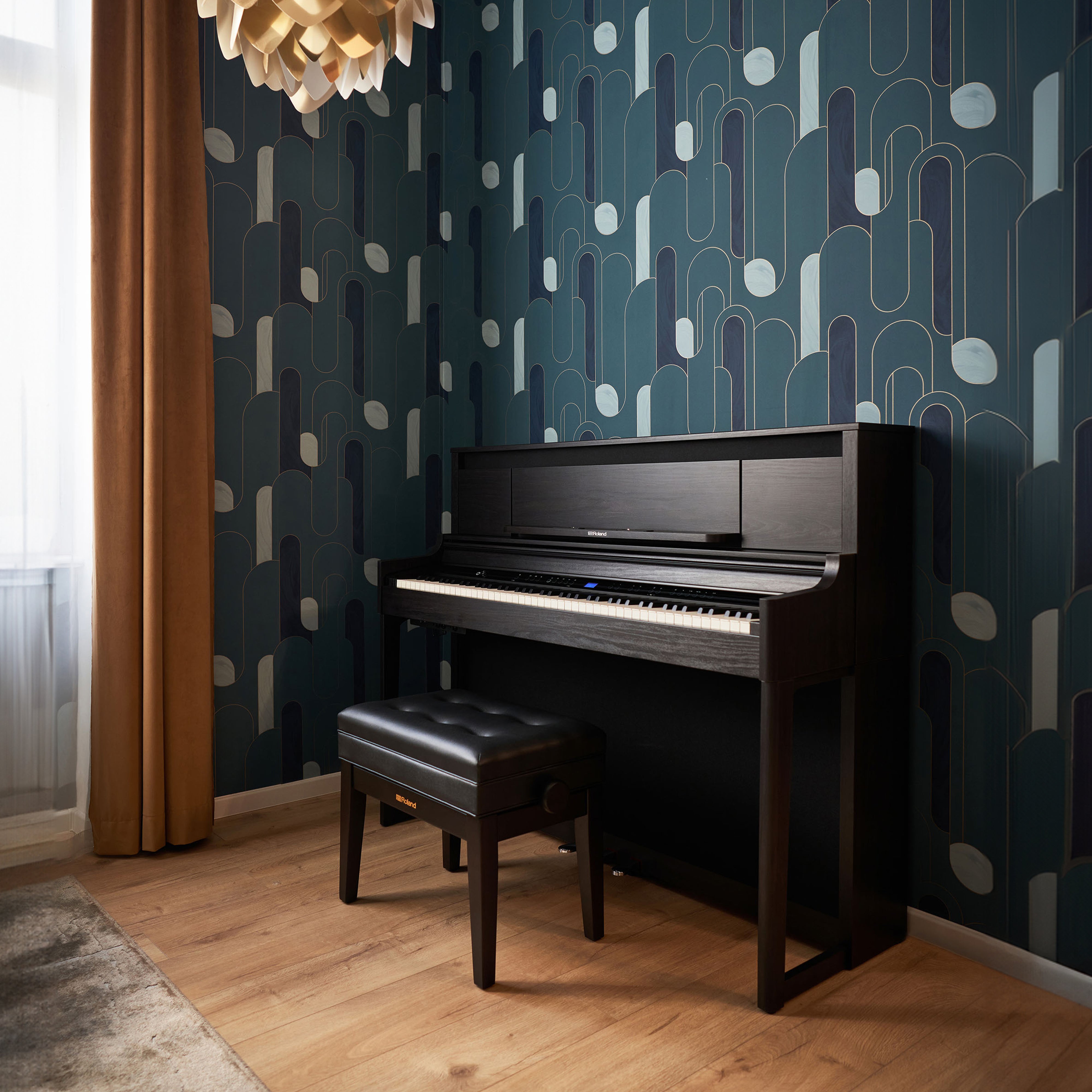






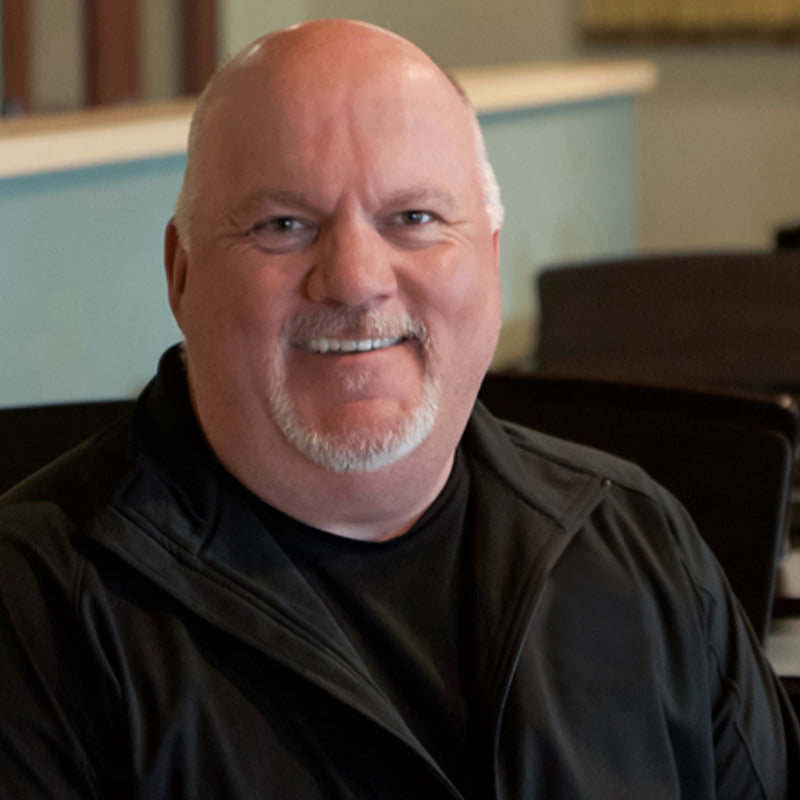
YOUR MUSIC TECHNOLOGY STORE SINCE 1984